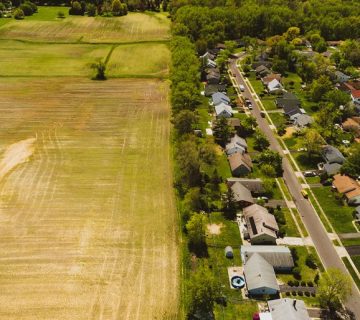In the United States of America, commercial real estate buildings are categorized into different groups. Generally, commercial real estate buildings are categorized by age, amenities, aesthetics, and general infrastructure. Usually, these classes help commercial real estate brokers prepare market data and justify the cost of leases and rents.
So, how is a commercial real estate building classified? There are three main classes of commercial real estate buildings. They are Class A, Class B, and Class C. However, these classifications are subjective. This is because the real estate quality in one place is never the same as that in another place. A Class B building in a large, urban market might be a Class A building in a mid-size city.
The following is more on these three classes of commercial real estate buildings.
Class A Commercial Real Estate Buildings
Commercial real estate buildings that fall under this class are usually new in the area. Class A commercial real estate buildings are those that have state-of-the-art facilities.
A Class A commercial real estate building will usually be in a great location and have high-quality construction, the best security and communication systems, and top-notch management. These buildings have a high visual appeal and ample parking space.
Additionally, the spaces inside a commercial real estate building that falls into Class A will usually have high ceilings.
Because of all these qualities, Class A commercial real estate buildings occupy the highest-price range in the area.
Class B Commercial Real Estate Buildings
These are older than buildings under the Class A category. Usually, a Class B commercial real estate building is a building that is between 10 and 20 years old. Buildings in this category typically do not have the same architectural details and high-quality fixtures as the buildings that fall into Class A. However, these buildings generally have nice structures with functional facilities. Class B commercial real estate buildings have fair to good visual appeal, decent quality management, a fair amount of parking space, and are somewhat well located.
If a Class B commercial real estate building is well renovated and attended to, it can recover its original splendor and almost look like a Class A building.
Class C Commercial Real Estate Buildings
Class C buildings are the oldest, generally over 20 years old. These buildings are the poorest in quality and tend to be located in the least desirable places. Class C commercial real estate buildings have little to no parking space and outdated infrastructure and technology. Usually, these buildings are occupied by new companies that lack sufficient funding and small family-run businesses. Because these buildings occupy the lowest price point in the area, they usually offer below-market rents.
Indeed, it is possible to renovate a Class C commercial real estate building to become a Class B building. However, it is quite unlikely that a Class C building can be renovated to become a Class A building.
If you are looking to build a commercial property, talk with an experienced real estate attorney to help you figure out what goes into the potential classification of the property and how best to proceed. A lawyer specializing in commercial real estate law can guide you through the varying processes for the different property types and provide you with the knowledge you need to make a well-informed decision about how best to approach your construction process.



